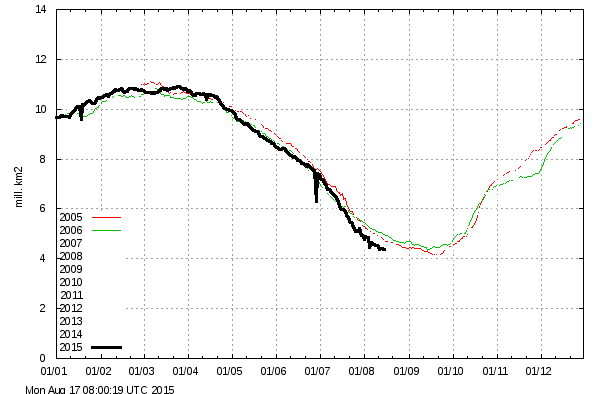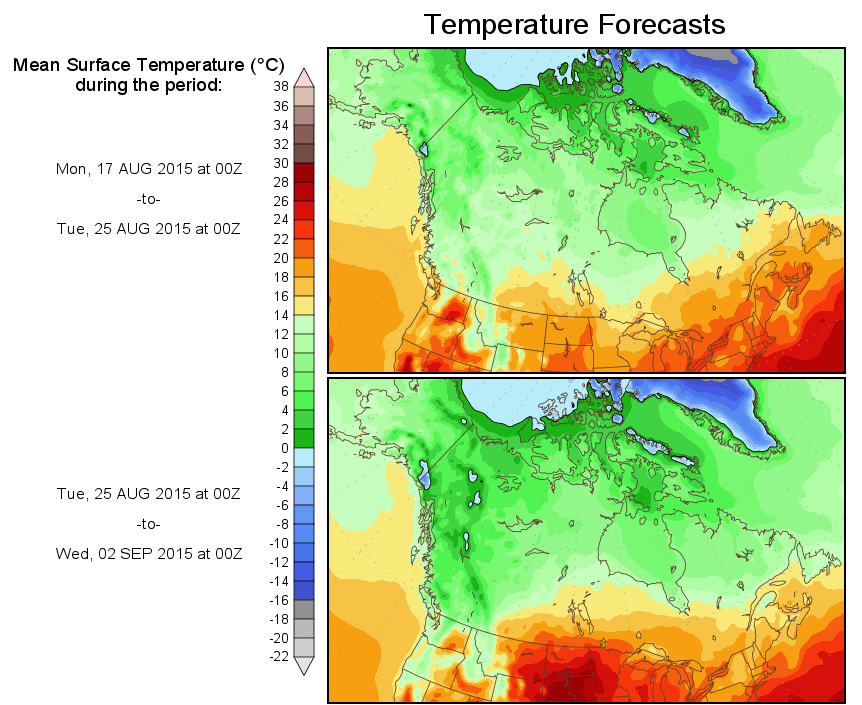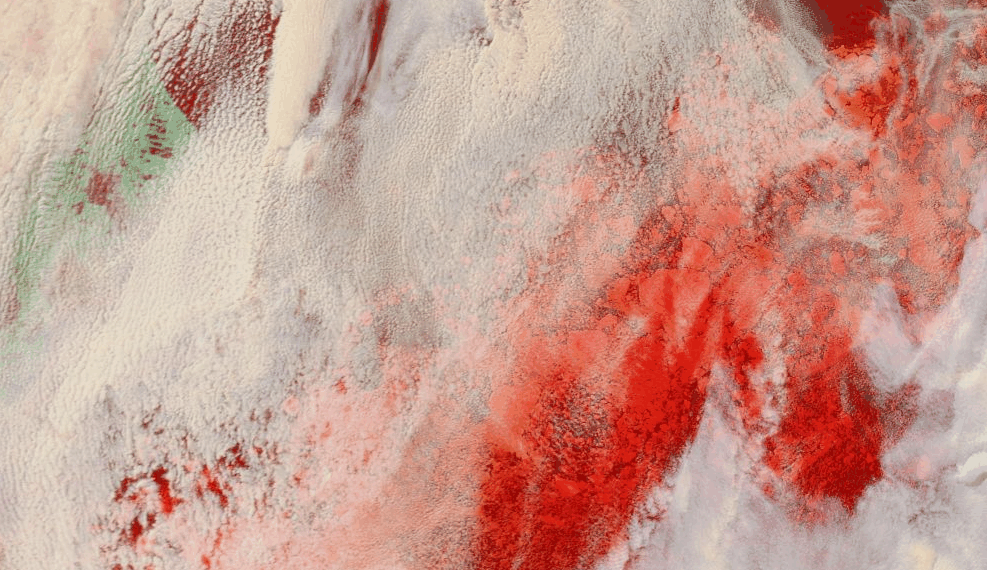Arctic sea ice extent at 30% concentration is currently almost flatlined right at the 2006 minimum. That was the year with the highest minimum of the past decade
The melt season is essentially done, as cold air has settled over the Arctic.
NSIDC was hoping that the multi-year ice in the Beaufort Sea would melt out, but it isn’t happening. This is the current image north of Point Barrow. The multi-year ice is looking just fine.
Experts say that the Arctic will be ice-free in September, “with devastating consequences for the world”
The End of the Arctic? Ocean Could be Ice Free by 2015 – The Daily Beast






Here’s the MASIE results with a month to go:
https://rclutz.wordpress.com/2015/08/17/arctic-ice-stays-the-course-august-15-summary/
https://rclutz.files.wordpress.com/2015/08/masie-day-227.jpg
Say goodbye to polar bears and a whole lot of ice ?
Say goodbye to credibility !!!
Meanwhile, Soros buys heavily into COAL !!!
https://notalotofpeopleknowthat.wordpress.com/2015/08/17/soros-and-obamas-war-on-coal/
How much of this is going to get funnelled back to Obama once he is out of office.
Force the price down…. buy up big…. wait for the surge.
FOLLOW THE MONEY !!!
Middle of August and still have some ice on Hudson Bay … much of the older thick Arctic ice (>5 meters) has been eliminated but as the coming ice season is just around the corner there’s the possibility that much of the 2-meter ice will become much, much thicker. I just don’t worry about an ice-free Arctic because this planet is far more complex and resilient than worry warts are wont to acknowledge.
We also need to recognise that for the first 2/3 or so of the Holocene, the Arctic was quite probably mostly clear of ice in summer.
(Biomarkers from Fram Strait show this to be the case)
We are actually at a time of HIGH Arctic sea ice levels compared to all but the last few hundred years of the current interglacial.
It is still winter in Argentina. Here’s a picture of a couple of wild guanacos crossing over a mountain pass. They didn’t make it.
https://sunriseswansong.files.wordpress.com/2015/08/guanaco-frozen-0000774466.jpg
https://sunriseswansong.wordpress.com/2015/08/17/pope-francis-call-home-argentinian-guanacos-freezing/
I know that was wildly off topic, but I couldn’t resist.
Caleb that looks like missing heat to me. I mean we’re ‘on fire’ in a cold heat sorta way 😉
If those poor ctitters were looking for heat, they missed it.
I wouldn’t say the ice extent line has flatlined in 2015 yet, I expect it to follow the same curve as previous years and there will still be loss. It’s already closer to 2010 than 2006 and other years in last 10 are closer also. Same as 2006 doesn’t seem a good prediction in hindsight, mine was equally bad in 2013 as was NSIDC’s.
The thicker ice In the Beaufort sea is very diffuse now so could melt further, I am not sure it can be claimed to be healthy from that photo. If you look the Danish ice volume maps
http://ocean.dmi.dk/arctic/icethickness/thk.uk.php
and compare todays value with that of 2006 you can see it is a lot less healthy !
Best to wait to the minima to actually happen and then compare extent minima between years. Due to how broken up it is I expect bigger variation around the end both ways due to wind effects. The minima might also be slightly later or earlier because of this.
Andy
The minima would have occurred during the first 2/3 or so of the Holocene, when there was mostly ZERO summer sea ice.
Seriously, talking about maxima and minima in such a short record is absolutely meaningless without considering the longer term history.
Remember that we have just finished climbing out of the COLDEST period of the last 10,000 year… we should darn well hope it keeps melting, because if it doesn’t we are heading back to those very cold and rather hostile conditions.
It’s the rate of change and effects such as recovery rate that provide interesting science, we don’t have yearly data for a vast time period to compare recent observations so we compare what we do have. So this shows you what has impact and what does not and we can fine tune predictions, which is fun ( er, relatively!! ). When I say variables here I am not talking about any possible global warming, I think that is impossible to tell if that is having any effect at all currently, never mind how much, but effects such as the high temps and warm southerly winds in summer 2007 and storm of 2012 are noteworthy.
If you look at
http://arctic.atmos.uiuc.edu/cryosphere/IMAGES/seaice.anomaly.arctic.png
there definitely seems to be 2 or even 3 different phases, interesting question is why.
The Antarctic seems currently to be close to average on extent for the first time in years even after a very positive extent from the minima over the last few months, so that will be interesting to watch in the next 1.5 months and see what the experts say it is down to.
Andy